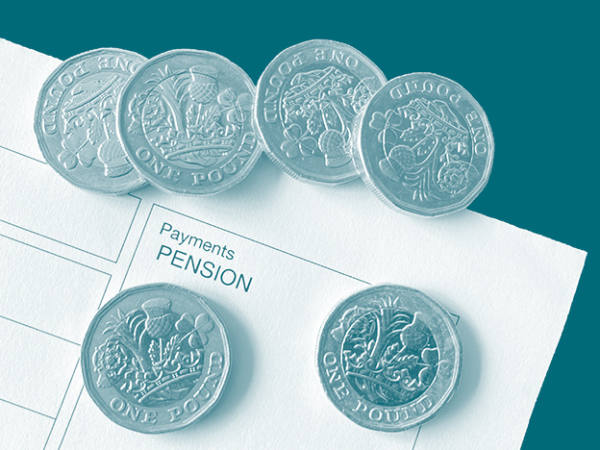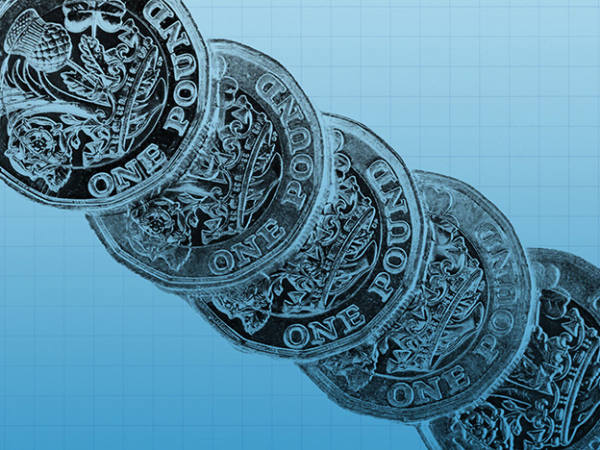In the recent Budget, the government raised the thresholds at which the annual pensions allowance starts to taper back. This means that, from April, those earning up to £200,000 can claim tax relief on up to £40,000 invested in a pension each year, and only those with an adjusted income of over £240,000 will have their allowance tapered back.
However, the taper now goes further than the previous £10,000 maximum allowance. If you earn over £300,000 your pensions annual allowance will be less than £10,000, and those earning £312,000 a year or more will only be able to put £4,000 a year into pensions.
Even if this does not affect you, you may be limited if you have hit or are approaching your pensions lifetime allowance, which is currently £1,055,000 and rises to £1,073,100 in the 2020-21 tax year, which starts next month.
The other main way in which you can save tax efficiently is through individual savings accounts (Isas), and you can put up to £20,000 a year into these. But if you want to invest more money tax efficiently after you have used this and your pensions allowance, you need to consider further options.
These could include venture capital trusts (VCTs), listed funds that typically invest in early-stage unquoted companies with a maximum of £15m of assets or, in a few cases, shares of companies quoted on the Alternative Investment Market (Aim). The main attraction is 30 per cent income tax relief if you buy new VCT shares and hold them for a minimum of five years. So, for example, every £10,000 you invest in VCTs only costs you £7,000.
The dividends they pay are tax-free and when you dispose of VCT shares it does not incur capital gains tax (CGT).
You can invest up to £200,000 in VCTs each year – far more than in pensions and Isas – and there is no lifetime limit on what you can invest in VCTs. Although these funds are not suitable or necessary for most people, for the right investor they can be a useful part of an overall tax-efficient investment strategy, points out Jason Hollands, managing director at Tilney Group.
VCT tax benefits
| Tax free capital gains | Yes |
| Rate of income tax relief on subscription | 30% |
| Maximum investment eligible for income tax relief | £200,000 |
| Minimum time investor must hold VCT to qualify for income tax relief | 5 years |
| Tax free dividends | Yes |
Source: AIC
Changing profile
VCTs were originally launched by the government in 1995 to provide funding to smaller UK companies that can deliver high growth. However, these also have a higher risk of failure, so VCTs increasingly invested in safer assets such as small but established and profitable companies, asset-backed companies such as pubs and wedding venues, renewable energy projects receiving government subsidies, and management buyout (MBO) deals.
But over the past few years the government has made a number of changes to the rules on what VCTs can and can’t invest in. To a certain extent, this has taken them back to what they were – a way to back small companies struggling for funding and that have a higher risk of failure. But this means that VCTs’ investment and risk profile is also changing.
Since 2015, VCTs have not been able to invest in MBOs. They can now only invest in companies under seven years old after their first commercial sale took place, or under 10 years old if they qualify as knowledge-intensive companies. Companies that meet this definition typically have a focus on research and development.
Since April 2018 VCTs' investments have had to meet a risk-to-capital condition, a principles-based test designed to reduce the scope for capital-preservation strategies.
And since April 2019, the percentage of qualifying investments – ones that meet these stringent rules – that a VCT must hold has increased from 70 per cent to 80 per cent.
This effectively pushes VCTs up the risk curve because they have to focus on earlier-stage and potentially riskier companies. And it means that one of their most popular features – the ability to pay attractive and reliable dividends – is not so certain.
“Often [the former type of] investments also included a loan element,” explains Alex Davies, chief executive of investment platform Wealth Club. “A VCT would lend a company money, and the company would make regular repayments, which helped the VCT pay high dividends. VCT dividends of between 8 per cent and 9 per cent were not uncommon, but today most VCTs target a 5 per cent yield plus special dividends [following exits of investments]. People who have invested in VCTs in the past purely for the high income should be prepared for the likelihood that future income may be less consistent and not as high on a regular basis.”
Mr Hollands, meanwhile, is concerned that the greater restrictions on the types of companies VCTs can invest in could result in many VCTs chasing certain deals, bidding prices up.
Despite this, analysts and advisers think that VCTs can continue to play a useful role in some investors’ portfolios. They still offer a number of tax benefits, and although they have a greater focus on earlier-stage companies these are not start-ups, which are considered to be even riskier than early-stage companies.
VCTs also hold anything between about 30 and 70 companies in different industry sectors, so their risk is spread well. And the new rules do not require VCTs to jettison investments acquired before the various sets of new rules came in, meaning that some established VCTs still hold lower-risk, mature investments. So there are advantages to picking a VCT with a mature portfolio.
“A long-established VCT will have been built over the years and usually includes a good spread of companies at different stages,” says Mr Davies.
For example, it may have a few recently added young and small companies alongside more mature ones. And the shift to investments made under the new rules is gradual – VCT managers are not plunging into these without careful due diligence and selection.
“We are reducing [old assets] over time,” explains Will Fraser-Allen, managing partner of Albion Capital. “We have sold various holdings over the past two years. Some of the new businesses are doing well and growing – we have seen some strong performance driven by valuation uplifts and exits. The companies are young and will require multiple rounds of funding from us. Our focus is on business-to-business software, healthcare and tech-enabled businesses in the UK."
Albion now invests in areas such as digital risk management where recent investments include Elliptic, a provider of anti-money-laundering compliance and forensic investigative services in cryptocurrencies. It also invests in companies involved with machine learning and automation, such as Speechmatics which works on speech recognition and transcription technology.
As a result, Mr Davies argues that in the short term there will not be a huge impact on VCTs’ returns. “The assets [acquired under the old rules] can provide a valuable source of stability and income, giving the newer investments time to mature,” he says. “Many VCTs still have a significant percentage of their assets in old-style investments, for example Downing ONE VCT (DDV1), and the British Smaller Companies, Mobeus and Northern VCTs. How quickly [VCTs shift more in favour of new-style investments] will depend on how much new money a VCT raises and for how long it decides to hold on to old-style assets. The more of [its assets are] in new-style investments, the more volatile the returns are likely to be, especially in terms of dividends. But with greater risk should come greater growth, and in turn greater returns. Moreover, because of the proliferation of older assets this isn’t going to be a cliff-edge change.”
And not all VCTs covered dividends with income. “We always covered dividends by total returns [rather than with] income from the investments,” explains Mr Fraser-Allen. “[Going forward] there may be shortfalls in the short term, but the good years could make up for less [good ones]. However, the dividends may be less steady. The key is a decent flow of exits each year so that we have large portfolios of various different companies with different maturities. [The VCTs are] constructed to target a 5 per cent yield and there is potential for special dividends.”
Some VCTs, meanwhile, such as Octopus Titan (OTV2), had a focus on more growth-orientated companies even before the rule changes so have not had to make wholesale changes to their investment strategies.
Be aware of ongoing change
As time goes on, VCTs will be increasingly focused on potentially riskier investments as they sell their older ones and invest in new ones. So when choosing a VCT it is important to know what proportion of its assets are in older investments made before the rule changes and in newer investments. “The legacy investments matter because they are what could be paying the dividends," says Mr Hollands. "You can’t necessarily make assumptions about a VCT because of its past performance and, even if you think you know [about VCTs], they are not what you bought several years ago.”
In five years’ time, for example – the minimum period for which you have to hold a VCT to get the tax benefits – its profile might be very different to what it is today.
It is also important that the managers of the VCT you invest in have the right expertise to invest under the new rules. A number of managers have added staff with experience in, for example, earlier-stage tech companies. NVM Private Equity added four staff in 2018 with specialisms in areas such as technology, software and life sciences. The company said it “was building a dedicated and focused VCT team to develop the business in a changed environment by bringing in people with experience in new, fast-emerging technology, finance and life science sectors”. It also made hires in 2016 and 2017.
And Mr Fraser-Allen says: “Our focus has changed and we now focus on technology. So we are making sure that we build the investment team by bringing in people with tech experience.”
Because VCTs are increasingly focusing on smaller companies, from which they require a good exit to make a profit, dividend payments could become more erratic. In years when profitable exits are made they will be high, but in other years they might have to cut or struggle to pay them. For example, last year, Northern 2 VCT (NTV) and Northern 3 VCT (NTN) cut their dividends from 5.5p in their previous financial years to 4p. Northern 3 VCT’s board said: “We are continuing to build a portfolio of investments in innovative earlier-stage UK companies with significant growth potential, with a view to achieving a capital return rather than income generation. The potential returns are attractive, however the investment holding period required will typically be longer and there may be greater fluctuations in short-term results.”
When to invest
VCTs can still help higher earners mitigate income tax bills. They are also useful for tax-efficient saving, for example for retirement, if you have used up your pensions and Isa allowances and are prepared to allocate money to higher-risk investments. And although their dividends may not be as regular or as high, they could still play a part in providing a tax-free income in retirement.
It is better to invest in VCTs earlier in the tax year. This is because to get their tax benefits you have to invest in new shares rather than ones bought on the secondary market, and when popular VCTs with good track records issue new shares they tend to sell out fast. This year VCTs are in aggregate raising £820m, according to Wealth Club.
And if it is late in the tax year you might also make a decision on which VCT to invest in a rush without much scrutiny, but the high-risk nature of these funds means that it is very important that you take the time to do thorough research on them before committing any money to them.
But for some investors it makes sense to invest in VCTs later in the year because they do not know their tax position until then. For example, if you have variable earnings because you are self-employed or part of your remuneration package is a bonus late on in the tax year. And this year, although some good VCTs had already sold out at time of writing, there were still new share offers from good quality VCTs open to investment.
However, check a VCT’s capacity before you apply for shares by checking with the broker you use or getting in touch with its manager. And don’t leave it until the very last moment because some VCTs still have to be applied for by post rather than electronically.
Risks
VCTs invest in smaller companies, which have a higher failure rate than large, stable companies, and can struggle in times of economic difficulty – such as may result from the current coronavirus crisis.
You have to hold VCTs for at least five years to enjoy many of their tax benefits – if you exit any earlier you lose these. If you need to access your money in the short term VCTs are not suitable. And because the early-stage companies they invest in can take time to come to fruition, ideally you should be able to hold them for longer than five years.
There is also virtually no secondary market for VCT shares, so don’t assume that you could easily and cheaply sell them after five years. VCTs typically trade at a discount to NAV – the average discount for the Association of Investment Companies (AIC) VCT Generalist sector was 5.6 per cent and for the AIC VCT AIM Quoted sector 14 per cent, according to the AIC as of 13 March.
However, some VCT managers do share buybacks to try to control discounts and you may be able to sell your shares back to them as part of such a programme, in some cases at a relatively tighter discount to NAV. Although you should aim to hold your VCT shares for the long term, if you decide to sell at some point after five years contact the broker through which you bought the VCT shares or the VCT manager for more information on this.
VCTs typically have higher ongoing charges than most open-ended funds and investment trusts, many of which charge below 1 per cent. VCTs' charges are pushed up in a number of cases by performance fees so, for example, the average ongoing charge plus performance fee for the AIC VCT Generalist sector is 2.95 per cent and for the AIC VCT AIM Quoted sector it's 2.16 per cent. These are just averages, so some VCTs’ ongoing charges plus performance fee figures are even higher.
A reason why many VCTs have higher fees is because they mostly invest directly in small unquoted companies, which is a more labour-intensive process than investing in, for example, equities listed on a major market such as the FTSE 100 or S&P 500.
“A VCT manager’s role is very hands-on,” explains Mr Davies. “There is very little or typically no research on the companies they buy. They have to do all the due diligence, which can take months and at any point the deal could fall through. And when they [have a stake in a company] VCT managers [may] want to take a seat on its board and have a very active role in driving the company towards a profitable exit.”
Because of VCTs' high risks, if you have not used up your annual Isa, and annual and lifetime pensions allowances, do not invest in a VCT. You can choose what you hold in self-invested personal pensions (Sipps) and Isas, so you do not have to opt for very high-risk investments. Whatever you hold within these wrappers is also very tax efficient, and pension and lifetime Isa contributions also get government tax relief. If you are keen to have exposure to smaller companies or private equity you could hold smaller companies funds or private equity investment trusts in your Sipp and Isa, and you can find ones with much lower charges than those of VCTs.
VCTs to consider
Octopus Titan VCT (OTV2), which launched in 2007, has always invested in earlier-stage growth-focused companies, so unlike many other VCTs is not having to adjust to the new rules. It invests in more than 75 businesses in a number of industry sectors, many of which are technology enabled. Octopus Titan VCT targets a dividend of 5p a year, plus special dividends if portfolio companies are sold at a significant profit.
The managers of this VCT have “a track record of spotting rising stars and achieving high-profile exits, including trade sales to the likes of Amazon (US:AMZN), Google (US:GOOGL), Twitter (US:TWTR) and Microsoft (US:MSFT),” says Mr Davies. "Zoopla, Secret Escapes, graze.com and Tails.com have received funding from Octopus Titan VCT."
Mr Davies also likes ProVen Growth & Income VCT (PGOO) and ProVen VCT (PVN), which has now closed. ProVen Growth & Income VCT launched in 2001 and is run by Beringea. It targets a dividend yield of about 5 per cent of its NAV per year and may pay a special dividend in addition.
“These VCTs invest across a range of sectors in unquoted, smaller companies with strong management teams and the potential for rapid growth,” adds Mr Hollands. “Importantly, [their managers] seek to identify a clear path to an eventual exit before investing. An example of a notable exit was the sale of Watchfinder, an online platform for pre-owned high-end watches, to Swiss luxury goods group Richemont (Swi:CFR) for 9.89 times the original investment.”
The three Northern VCTs have an outstanding reputation for delivering good returns, with each one more than doubling money put into them over the past 10 years, assuming dividends were reinvested, according to Wealth Club. But as of 12 March, of the three funds only Northern 3 VCT (NTN) had capacity left – about £1.8m.
These VCTs in aggregate hold 31 mature unquoted companies and a venture portfolio of 30 companies that have been invested in since the VCT rules started to change in November 2015. Mature holdings include Lineup Systems, a multi-channel advertising and media software company, and Agilitas IT Solutions, a provider of outsourced IT inventory management services.
These VCTs were known for their reliable dividend stream, but the rule changes resulted in two of the funds cutting them last year. They target a dividend of 4 to 5 per cent of NAV, and in time their younger companies could deliver strong growth.
Amati AIM VCT (AMAT), as its name implies, invests in Aim-traded companies, and targets a dividend of 5-6 per cent of NAV. It holds both mature, revenue-generating companies and earlier-stage life science and software investments.
“Although the companies held are UK-based, in accordance with VCT rules, their revenues are internationally diversified,” says Mr Hollands. “Technology, healthcare and industrials are notable themes. An example of an investment in the portfolio is AB Dynamics (ABDP), a leading company involved in vehicle testing technology to improve safety and driver-assistance.”
Some of the 20 per cent of its assets that it does not have to invest in qualifying investments, meanwhile, are in TB Amati UK Smaller Companies Fund (GB00B2NG4R39), which has a strong performance record. Read our interview with TB Amati UK Smaller Companies Fund's manager in the issue of 14 February.
Unicorn AIM VCT (UAV) aims to provide a steady flow of dividends and capital gains. It “provides access to a diverse and mature portfolio of 99 holdings”, say analysts at Bestinvest. “Its investors also get some exposure to several of Unicorn Asset Management’s open-ended funds. The VCT is managed by Chris Hutchinson, who has a strong track record and is supported by the experienced team at Unicorn. The companies [they invest in] are typically profitable prior to initial investment, preferably have leading positions in growing markets, run sound operational and financial controls, and have experienced managements.”
At the end of last year its assets included 69 Aim and six unquoted companies, and about 22 per cent of its assets were in technology and healthcare companies, according to Bestinvest.
It does not have a dividend target, but paid 6.5p per share last year, and has paid no less than 6p per share in each of the past 6 years.
| VCT capacity as of 13 March |
| VCT offer | Sector | Total raised (£) | Capacity (£) | Closing date | |
| Octopus Titan VCT | Generalist | 105 | 65 | 03-Apr-20 | |
| Baronsmead VCTs | Generalist | 42.4 | 7.6 | 01/04/2020** | |
| Northern VCTs | Generalist | 38.5 | 1.5 | 01-Apr-20** | |
| Pembroke VCT | Generalist | 31.5 | 8.5 | 03-Apr-20 | |
| Octopus Apollo VCT | Generalist | 28 | 22 | 27-Mar-20 | |
| ProVen VCTs | Generalist | 27.3 | 2.7 | 02/04/2020** | |
| Amati AIM VCT | AIM | 19.5 | 25.5 | 02-Apr-20 | |
| Foresight VCT | Generalist | 19.4 | 5.6 | 03-Apr-20** | |
| Downing ONE VCT | Generalist | 12.4 | 12.6 | 03-Apr-20 | |
| Unicorn AIM VCT | AIM | 10.5 | 14.5 | 02-Apr-20 | |
| Draper Esprit VCT | Generalist | 9.8 | 10.2 | 03-Apr-20 | |
| Puma Alpha VCT* | Generalist | 4.7 | 45.3 | 03-Apr-20 | |
| Triple Point VCT 2011* | Generalist | 4.6 | 15.4 | 03-Apr-20 | |
| Calculus VCT* | Generalist | 3.2 | 16.8 | 03-Apr-20 | |
| Blackfinch Spring VCT | Generalist | 2.7 | 27.3 | 03-Apr-20 | |
| Foresight Williams Technology VCT | Generalist | 1.6 | 28.4 | 03-Apr-20 | |
| Seneca Growth Capital VCT* | Generalist | 1.6 | 18.4 | 03-Apr-20** |
| Source: Wealth Club |
| * estimated |
| **Fund provider |











